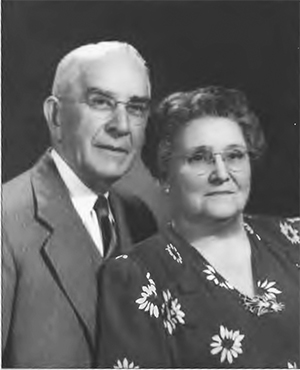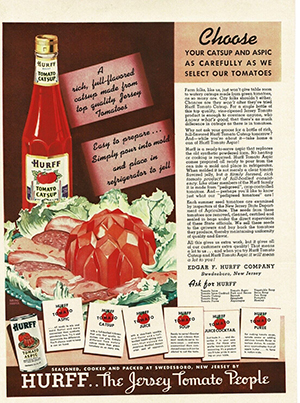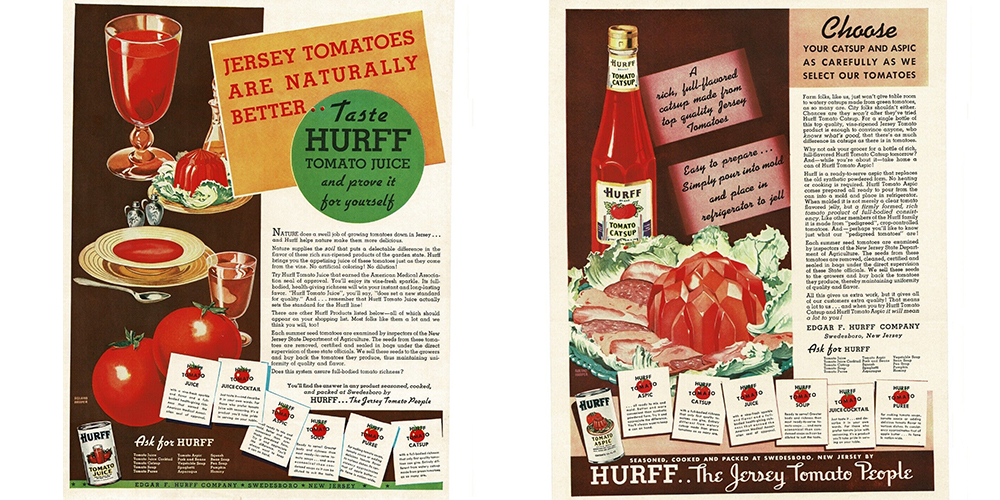SWEDESBORO — Once upon a time in Swedesboro you always knew that summer was waning and the start of school not far off by the tangy odor of tomatoes in the air and the shift change whistles at the Edgar Hurff Canning Company.
Mid-August meant the tomato glut was on and local farmers would line up on Swedesboro street to dump their load of baskets of deep red Rutgers, Marglobe and various other varieties on the processing lines. Their and the cannery’s employees checks kept the local economy rolling.
The story of the Hurff Company literally had its “seeds” sown in the summer of 1901.
Edgar F. Hurff was born on the Clark farm on Center Square Road in 1878. He married in 1899 and leased a farm on the High Hill Road where his landlord in 1901 convinced him to wait until June to plant his watermelons so that he might have late melons for the market when others were not available.

He got a bumper crop but a storm system turned the weather cold early and the market fizzled. He was stuck with a field of ripe melons.
But in October the president of Landreth Seed Co., a firm whose history went back to the early 1800’s, saw the unpicked field and asked Hurff what he intended to do with them. When Hurff indicated he would plow them under, the president offered to buy the seeds if Hurff would save them.
And so in 1902 began a seed harvesting operation and a relationship with Landreth Seed that lasted for nearly a half century, until Hurff sold his seed business in 1945.
As the seed business boomed and other seed distributors bought his seeds, Hurff expanded into tomato, pepper, squash, pumpkin and other seed processing.
He operated on his farm and had a large herd of hogs to devour the left over pulp. But even they couldn’t consume the waste. So after a few years Hurff decided he would can some of the residue rather than throw it away.
Thus, early in 1913, he bought the Lewis P. Mayer property at the corner of Water and Third Streets and near both the railroad and the Raccoon Creek — both necessary for transportation of containers and finished products.
The property he bought had been a cement plant and even today you can still find in Swedesboro and other local towns metal plates in the sidewalk identifying it as the work of “L.P. Mayer”.
By August 1913 Hurff had his canning factory up and running in operation. At first he canned tomato pulp and pumpkins in October. The first year he put up 25,000 five-gallon cans of tomato pulp plus saved thousands of dollars worth of seeds.
He utilized a crusher that after the tomatoes had been washed and hand sorted would spit out the pulp in one direction, the seeds in another and the skins in a third. The skins for many years were merely dumped into the Raccoon Creek for dispersal by the tide. However environmental laws later forced the skins to be buried on vacant land.
Like his seed business, the canning business boomed and Hurff sold his farm in 1915 and moved to a house at 1527 Kings Highway in Swedesboro.
From a first year employment of about 40 workers, the company over the years, grew to employ more than 1500 in the summer and several hundred during winter months.
In 1937 Hurff advertised several times in the year-old Life Magazine, buying the whole inside front cover with color ads. His ads stressed local home-grown and home-recipe products.
Some of the copy stated, “When Mr. Hurff decided to ‘put country fair food on city tables’ the women-folk of Swedesboro developed a tomato ‘cookery’ to match his growing skill.” The ad had pointed out Hurff’s “pedigree tomato” seed that the farmers bought from him.
The ads pointed out that The Hurff Co. was known as the “Jersey Tomato People” and that Jersey tomatoes are like “Idaho Potatoes, Baltimore oysters and Maine lobsters.”
His ads carried the logo “Seasoned, Cooked and Packed at Swedesboro by Hurff The Jersey Tomato People.”

Among the many Hurff products in the ads were tomato puree, catsup, juice, juice cocktail, aspic, soup, as well as pork and beans, squash, pumpkin, spaghetti, asparagus, hominy and bean, pea and vegetable soups.
Over the years the factory also processed, mostly in the winter months, dehydrated white potato shoestring and potato chips, tomato chips¼and two brands of dog food — Top Hat and Spunky.
Even as his work force grew Hurff said he never had any labor problems except in getting workers during World War II.
He built a labor camp off of Locke Avenue near the now replaced drawbridge. Some of the old buildings are still in existence. He brought in all kinds of labor — Puerto Rican, Jamaican and even German Prisoners of War.
Hurff stated that the camp could house 600 persons that he fed at least 550 of them three times each day. The camp had a store and two mess halls.
While the Hurff Company could not compare with such giants as Heinz or Campbell’s it was well known throughout the northeast. At one time the seed business had 2,700 customers and the canning end had 2,600 wholesale customers. The company was also closely tied with Libby’s.
Hurff is mentioned as having many firsts in the cannery business. He reportedly canned the first green asparagus on the east coast. His plant was the world’s largest independent processing plant. He developed the largest seed business in the world.

The Hurff label was seen in the small towns of New England as well as on the catsup bottles of New York City eateries.
Hurff sold his canning operation to his son, Allen and J. Oscar Hunt, in 1941 and Hunt, who bought out the son, ran the company under the Hurff name until he sold it to California Packing Co. (Del Monte) in the spring of 1948. (That is another story.)
Edgar Hurff was a “Horatio Alger” story. While he owned the plant, he kept a hands-on approach, often climbing onto farm trucks to inspect produce and constantly checking on his employees who he personally hired, fired, and often re-hired by the spoken word.
The canning plant provided the economic sustenance that kept Swedesboro and the surrounding area alive, especially during depression times.
Hurff made many personal contributions to the community, donating not only money but the assistance of his workers during off times to help his church, Trinity, and other churches in town. His biggest contribution may be the old Swedesboro Trust Company building on Kings Highway. It is now called the Swedesboro Library.
Hurff died in 1973 and is buried in Lake Park Cemetery.
by Bill Cozens (Originally printed in 2007)







